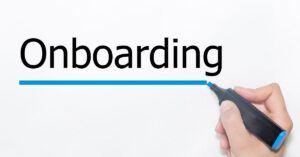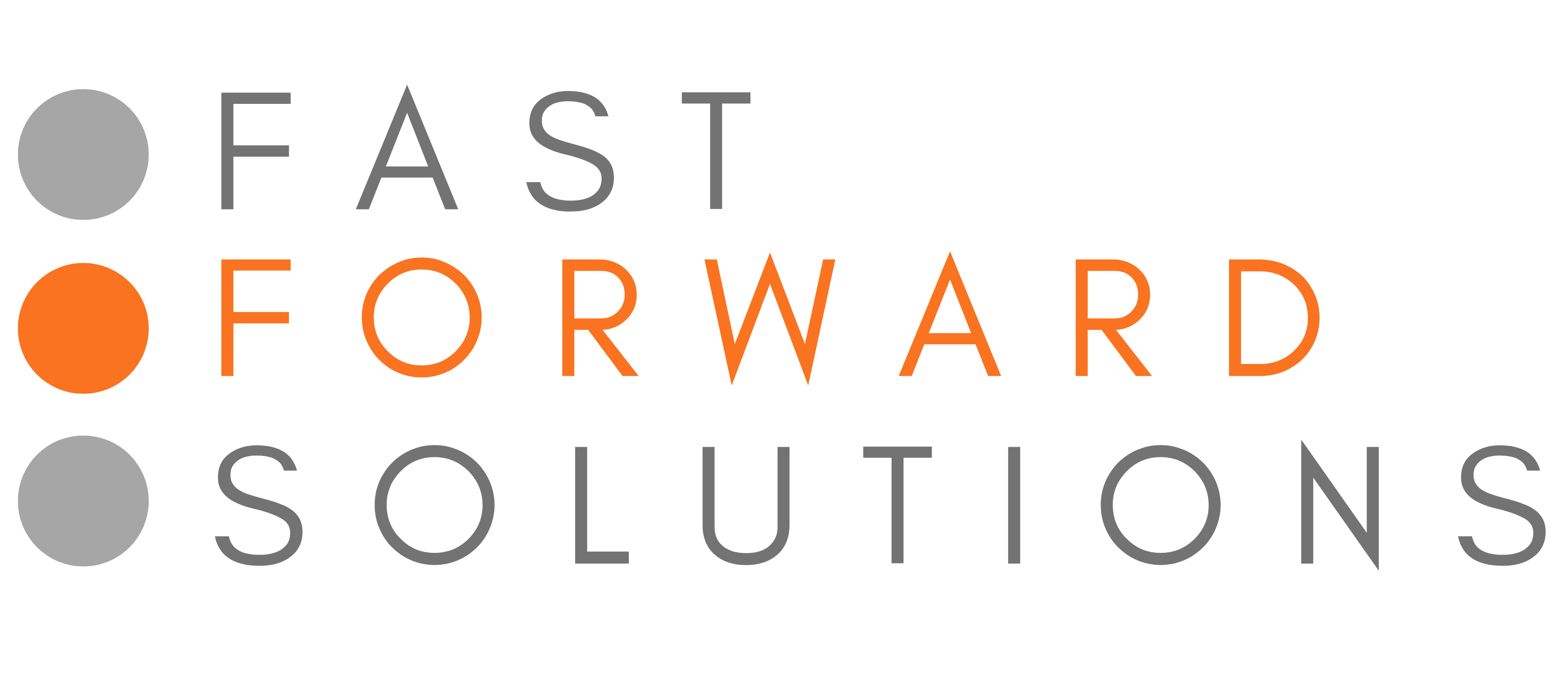
by Tom Bozyczko | December 6, 2020 | For the Employer, Recruitment
Imagine that the remote recruitment was successful. As of next week, you have a new leader on board. You hired her/him to lead the transformation before the crisis began. But now she/he joins remotely after a successful recruitment process and inherits a remote team. Her/his short-term urgent priorities are very different from what they seemed to be before the Covid-19 pandemic. How can you make her/his onboarding productive as her/his manager? What can you do to support her and make her a success rather than a failure
Be crystal clear about short-term goals.
Like any leader in transition, he or she must learn quickly how to create value, and this is even more important in times of crisis. In particular, make sure the candidate's role and goals are clear from the start. For example, if you were recruiting online to find someone specifically to help with crisis management - let them know that this will include downsizing. But if you hired someone before the crisis, as in the case of a new supply chain leader, they need to understand their role at a much faster pace. Continuing with this example, make it clear in the onboarding process what aspects of the original role are a priority and what has changed due to the need to deal with immediate disruptions - preferably before the new leader starts.
Ensure a structured learning process.
To accelerate the learning process in a virtual context, you need to provide information in a more structured manner. This requires paying more attention to what you put in your initial "document dump": organizational charts, financial statements, strategic and project documentation, and an up-to-date crisis response plan. In a recent Savannah Group survey of 200 senior managers, 95% said that having access to this information made them more effective in the first few weeks, especially if the organization asked them in advance what would be most valuable. Beyond that, you need to help new employees get a broader and deeper picture of the organization and their role within it. Virtual briefings can be scheduled for the new supply chain leader on critical issues with the existing system and its challenges, as well as on culture, planning and decision-making processes. When remote recruitment takes place - all subsequent processes should already be planned.

Onboarding - a remote process - build a (more) robust stakeholder engagement plan.
Remote recruitment passed, what's next? The next step and the next priority is to help new employees identify, understand and build relationships with key stakeholders. When onboarding is virtual, it's important to be even more detailed and structured here as well. Start by having a conversation, an internal consensus on who the new leader's key stakeholders are and, most importantly, the order in which the new leader should meet with them; these things are often not apparent to new employees themselves. For the new leader, there may be single-level people in finance and operations whose support will be crucial. Once the key stakeholders have been identified, reach out to them and align them with the goals you have set for the new leader; this will maximize the value of their meetings.
Assign a virtual buddy on board.
Quite a few companies have built buddy systems (buddies) into their pre-crisis processes related to the "onboarding" issue. And for new managers entering remote work organizations, a buddy is essential.
Good buddies play four key roles. (1) They help orient new employees to the business and its context. (2) They facilitate connections with people whose support is essential or helpful. (3) They help navigate processes and systems. (4) They accelerate acculturation by providing insight into "how things are done here."
Of course, you must take care to select buddies who have the time, skills and inclination to help, and you must let them know how they can be most helpful. Typically, they should not be in the new leader's chain of command. This means they should be peers or others who have the understanding of the "big picture" necessary to be able to really help. For a new leader emerging from remote recruitment in the supply chain, a peer in operations may be a good choice.
Facilitating virtual team building.
Helpful in face-to-face situations, the process of assimilating a new leader is essential. When remote onboarding takes place, it's another huge challenge - just like remote recruitment before it. It is a structured process of compliance and connection between the leader and the team he or she inherits. The facilitator asks the leader and team members questions to discover what they would most like to share and learn about each other. The facilitator summarizes the insights gained and uses them to guide the conversation between the leader and the team. The good news is that this process can be done effectively via video conferencing.
Remote trainer recruitment - a step to think about.
Long before the crisis, studies showed that coaching with transition acceleration cuts time in half. What kind of time? Obviously, the time needed for new executives to become fully effective in their roles. In fact - you, your team and the new leader's team are coping with the stress of responding to new challenges. For example: remote recruitment, onboarding or crisis. Transition coaches can be especially important now. They are especially helpful when they understand the organization, company culture and stakeholder environment. Associates and coaches play a complementary role. That is, they advise new leaders on the challenges they face and provide a safe space in which to discuss them.
While following these guidelines, it is important to remember that remote recruitment alone is not enough. In truth, effective virtual onboarding does not just mean helping external employees. Remote recruiting, remote working, onboarding - these issues are huge challenges for employees at both the lower and top levels. Employees making internal moves in an organization working remotely can face challenges. Against the odds that are just as difficult if not more difficult than those faced by new leaders.

by Tom Bozyczko | Sep 11, 2020 | Recruitment
When preparing a job description, do you simply copy and paste one template into another, or can you take the time to promote the position you are looking to fill? Retaining top talent is increasingly challenging and organisations are looking for new ways to build momentum and attract candidates. More creative, conversational and unconventional approaches to the job description yield better quality candidates and greater success in filling emerging vacancies. So what should a job description contain?
Job description example for IT positions
Firstly: background information
Job background information is essential both for people in personnel management departments and for those applying for a position within the job. Providing basic data will show the impact of the position on the organisational structure.
The main details of the job should include information such as the full name of the job, the purpose of the job, the working conditions, the location of the job and the level of classification in the organisation. It's important that this information is given in a simple way so that it's clear to both HR and other employees and job applicants. In the case of IT positions, it would be good to clearly state whether it is front end or back end.
Second: experience and qualifications required
The work experience and qualifications required for the job should be known to applicants in the recruitment process and to current employees. It is on the basis of qualifications and experience that applicants determine whether they meet the employer's requirements, and the employer can make a selection among applicants. A description of the experience and qualifications required for the job is also essential for current employees to plan their career path and development within the company.
Among the qualifications that are specified in the job description, there should be elements such as the required education, knowledge of foreign languages, skills, completed courses or indicated seniority in a similar position.
Third: Entitlements
Every employee should have clearly defined powers and additional authorisations. This ensures that the person in post is clear about what they are entitled to and personally responsible for.
Job authorisations may include, among other things, the power to make decisions on behalf of the company, to dispose of its finances and to sign documents on its behalf.
Fourth: tasks and competences
At this point, it should be made clear what the employer expects from the person hired for the position - after all, every applicant or employee wants to know what tasks their job entails.
The employer should therefore define what the employee is responsible for to his/her superiors, and what all the tasks and responsibilities are that he/she has to carry out during the employment relationship on the job. The definition of the terms of reference is crucial for both the employer and the employee - the supervisor knows on what basis he or she assesses the mentee and can determine whether the mentee is fulfilling his or her duties, while the employee can refer to the document when the tasks ordered by the supervisor go beyond the scope of activities stated in the job description.
Fifth: conciseness and specificity
Cut out the general stuff, be critical and ask yourself what is really necessary. Identify your needs, put it all down on paper and shave it down to the core competencies and tasks of the candidate. Try to challenge the typical description and "cut out the generic descriptions, be critical and ask yourself what is really essential".
Consider your list of 4-5 competencies, 4-5 required expectations and commit to them. Because you may be tempted to add lines like "detail-oriented" or "adaptable to change," be aware that such general points don't really differentiate candidates or have any real impact on your message.
Companies are also becoming more open to show earnings directly in the job advert. Doing so strikes a balance between employers and candidates, alleviating the stress of the dreaded salary interview. While employers may lose the upper hand in the discussion by using this method, they also avoid wasting the time of a candidate who may be applying for a job below the salary amount. An attractive job description is a key element of success, which is also rewarded by Google for Jobs, which indexes such a job ad higher.

It job descriptions as a marketing element
The classic job description is no longer sufficient. Instead, companies need to improve their advertising game and consider their job descriptions and job performance as advertising content. Such a description should be branded, catchy and engaging enough to make someone want to move on from their current employer to a new one.
For example, Monster has discovered a new way to interact with candidates by developing a program that allows people to embed videos directly into job descriptions! Skill Scout can also help companies tell their story with a platform that allows organisations to create their own videos that can be used in job descriptions. All of these companies are leveraging humanity, as job descriptions with video ads are viewed 46 percent more than written ones, and jobs receive 36 percent more indexing when accompanied by video.
What can be taken into account:
- Prepare a 30-second video on why a potential candidate should join your team
- Share stories about former employees in comparable roles and their increase in salary and competence levels
- Include LinkedIn profiles / communities of this team
- Upload videos or photos from your workplace
- Upload infographics and other visual media to show the uniqueness of this job offer
- Create job description text more dynamically by adding hyperlinks to more articles (media, awards, employee blogs, multimedia, business social links, etc.).
The usual job description is no longer enough in today's market, and companies will need to think more cheaply about how they interact and participate in the talent development process. Let them know what really awaits them when they are a new employee and don't be afraid to let your true colours shine! Also remember on your careers page about your privacy and cookies policy....

by Tom Bozyczko | Aug 5, 2020 | For Employer, Recruitment
Remote recruitment often seems complicated, but the truth is that done properly it can produce surprising results. Take into account that the job offer is seen by many people, so you can expect a huge number of applications from the moment it appears.
Remote recruitment
More and more companies are opting for remote recruitment as it takes relatively less time than traditional recruitment. First of all, in standard procedures, after sending the application, a face-to-face meeting takes place, which takes a lot of time. In remote recruitment, after initial verification of submitted applications, it is enough to make a phone call or send a test task. So at one time you have contact with many candidates. In the next stage of recruitment, on the basis of the sent task, you can verify which of the persons pass to the next stage, and which do not. This means that in a short period of time you can find a whole team to work with, without having to invite them to meetings.

Verification of the candidate
Many companies wonder how they can verify a particular candidate, i.e. do a so-called background screening, but here the options are several, depending on what the company does. It is perfect to send online tests or a test task to job candidates, because the time of sending back the completed one, as well as its accuracy, will tell a lot about a particular candidate. Often, its completion alone will allow you to assess an employee's knowledge of the software on which they will work in the future, or their approach to the tasks at hand. In many cases, after the initial verification of submitted documents, a video interview can be conducted, which will also be able to test knowledge of a specific topic. After the interview, we can move further in the process. The verification of the candidate will be particularly important if the employee will be responsible for customer contact. It is imperative to keep this in mind in order to be able to approach the recruitment process completely differently in the near future. Remote recruitment is not difficult to implement, provided that someone prepares it properly. There are also online solutions that check the candidate's relationship with previous employers e.g. Checkster -but here we have to be especially careful in the context of RODO regulations.
Recruitment - who is responsible for it?
The HR department is often responsible for the recruitment process, but not every company has one. Not only the manager is perfect, but certainly for many an external recruitment company will be the ideal solution. In their teams they have specialists who not only will be able to prepare a job offer in optimal time, they will verify the documents sent, but most of all they will prepare a list of candidates who best meet the expectations set by the company. Thanks to this, the list will reach the right person, and then test tasks will be distributed, which will lastly help in making the right decision. Remote recruitment allows you to get to know the market of employees, select a group of those who meet the requirements and current demand, but also allows you to verify their knowledge and skills. More and more companies are using this solution, as it is undoubtedly a big time and money saver. "Bad recruitmentcan cost a lot.
Executive search agencies remotely search for the best suited candidates and remotely verify their competences by presenting a shortlist of top candidates.

by Tom Bozyczko | Aug 5, 2020 | For Employer, Recruitment
Why is onboarding so important? Finding the best candidates for positions in your organization is only part of building an effective team. The onboarding process can be one of the most critical factors in ensuring that newly hired talent are productive, satisfied employees.However, in some organizations, this process is often confused with orientation. While orientation may be necessary - paperwork and other routine tasks need to be completed it is the comprehensive induction process involving management and other employees that can take up to 12 months.
Organisation of work in a company should be properly planned. However, practically every employed person should work on its proper course. Only then it is possible to have a team which will cope with each task perfectly. This is extremely important, because often each member is responsible for a specific part of the entrusted task. Only cooperation between all of them will make it possible to complete it on time.
What is onboarding?
From time to time, every company needs to hire another person. It is not always possible for this person to work on the company's premises. That is why every year online hiring becomes more and more fashionable. Of course, much depends on the specifics of the company, as well as the scope of its activities, but it is true that this concept is extremely broad. As a rule it refers to a new employee, and in fact to the whole process of introducing him or her into the life of the company after a positive interview and a decision to employ him or her in the organisation. Every company needs to hire someone new from time to time, so it is important to remember about it now. Surely, the initial fears will pass, it is enough that we get to know each other well, as well as everyone gets to know the scope of their work. Separation of tasks is extremely helpful, as it improves the functioning of the entire team, and thus the company functions properly. Sometimes it only takes a few days for everyone to forget that there is someone new and to treat them like any other employee.

Effective onboarding - what should I keep in mind?
The arrival of a new employee in the company on the first day is a big stress for the new job. For permanent employees, it is the moment when someone completely alien enters their environment. This person will have an influence on the course of tasks or the atmosphere in the team. The new person often feels lost and does not know what to expect. The first impression plays a key role, because each party has a chance to get to know the other party, as well as to quickly verify whether we can count on fruitful cooperation and a pleasant atmosphere. Of course, it is not always possible for the first impression to be correct. A very good element is the situation where the direct superior sends an e-mail about the start of work of a new employee on his/her first day of work. The personal data procedure should be kept in mind here.
The induction of a new employee should, above all, take place in a friendly atmosphere. He or she will have to learn a lot in a short period of time. Special attention should be paid to preparing a detailed plan for the employee's induction. Along with scheduled online meetings with other team members, the general assumptions of the company, its vision on further development, but also the complete organizational structure. At this stage, he or she will find out on whom it will depend how much work he or she will get, but also to whom specific tasks or questions can be addressed. Often the procedures for the circulation of documents, holidays or how any tasks completed over and above the normal schedule are accounted for are also discussed. A new employee should thoroughly familiarise themselves with the onboarding process, learn about their responsibilities, but also further development options and become familiar with the company's hardware or software they will be working on.
At the end of the probationary period, a debriefing meeting should be held with the employee to assess their induction process into the new organisation.
Who is responsible for onboarding a new employee?
In fact, there is no one right person who will be responsible for onboarding a new employee. Much depends on the size of the company, its structure or scope of activity. Most often it is someone from the HR department, but it can also be a manager or the boss himself if the company is small. Depending on whether there is one or several employees at a given time, such inductions can be done individually or in groups. It is obvious that in a situation in which a larger number of people are employed, it is worth conducting the introduction of employees en masse. Such an approach will not only shorten the time necessary for this task, but above all it will be possible to answer all questions or dispel doubts in an efficient manner. It is worth appointing one person who will provide additional help during the first few days, as well as help to implement the entrusted duties. On the face of it, this may seem difficult, but everyone has started at some point, which means that it is worth taking up the challenge. After all, a new employee will help with the execution of orders, improve the functioning of the company, and above all, it will allow you to relieve others. In every company, sooner or later the need to employ someone additional arises. Therefore, the size of the business will not be a major problem, because at any time there will be a problem and a need for additional hands to work.
Above all, it is important to remember about the right atmosphere and the right induction work with the new employee. A lot will depend on our involvement in this process and it may influence the Employer Branding of the organisation. Kindness and willingness to help will result in getting the right person in the right position. Moreover, in the future, it may be that their help will prove to be of maximum value. It is necessary to remember that everyone had to start at some point, therefore an efficiently conducted onboarding of a new employee, despite the stress, should take place in a maximally friendly atmosphere.
The worst thing for a new employee is being hassled through the recruitment process and then starting work and the receptionist isn't even expecting the new employee or their desk/office computer isn't prepared.

by Tom Bozyczko | Aug 4, 2020 | Recruitment
Remote recruitment has blossomed in 2020. The Covid-19 pandemic has made many employers aware that the internet offers more and more opportunities, including the ability to conduct effective remote recruitment and, for some roles and industries, full-fledged remote working. Enabling remote working is not only about saving space for a position, above all it is about relieving the burden of tasks that need to be completed on time.
In 2020, more and more companies are using this solution as it has many positive aspects. But how do you find the right employee? How should remote recruitment look like? What does a remote recruitment meeting look like?
Remote recruitment - time to start
In every company there comes a time when, despite the division of responsibilities between individual employees, there is a lack of manpower. In such a situation, the thought arises of hiring another person, who will relieve the already employed and who will additionally take care of other tasks or projects. As a result, the management decides to hire another person. Preparation of a job description, together with the requirements that the candidate must meet, is the first step.
Remote recruitment - where to start?
Completing what is expected of the candidate, but also gathering all the responsibilities they will have, will allow you to prepare a job offer. It is also necessary to take into account the working time that is foreseen, even if it will be typically task-based. The pre-verification process is an important issue. For some, it will be sufficient to send a CV to the e-mail address provided or to the company's career site connected to the ATS (Applicant Tracking System), while some companies decide to prepare a recruitment task or a questionnaire, based on which all the data will be collected and a preliminary selection will be made. A job offer prepared in this way should be placed on job portals or sent to a cooperating recruitment agency
Remote recruitment - preselection and contact with the candidate
Many start-ups do not realise that recruitment processes can be simplified, accelerated and automated and how helpful ATS screening and selection tools are today. Thanks to them, it is possible to review and assess applications in optimal time, send feedback, so the candidate has an overview of the status of his application and knows very well whether he passed the next stage of recruitment or not. The next question will be - how to conduct a recruitment interview remotely?
The next step is to contact the candidate and inform them that the interview is being conducted remotely. Interviews are conducted remotely so it may be a phone call or better a video call using applications such as Google Hangout, Zoom, Skype etc.
Depending on the preferred contact, but also the convenience of the recruiter.
It is not only the course of the conversation that is important, but also the questions that will be asked. In many companies, the first contact is to ascertain the credibility of the documents sent, but it is often an interview during which the terms and conditions of cooperation are discussed. In addition, the candidate may be sent online tests to confirm their skills, such as DISC or SHL.
Remote recruitment process
Remote recruitment can be carried out in various ways, so it is worth remembering that the more extensive it is, the more likely it is that the ideal person will be found for a particular position. The first point is always the advertisement, a lot depends on its structure and content. For this reason, you should make sure that it is properly prepared. The next stage is the receipt of applications, and after the deadline by which they should be delivered, a preliminary verification takes place. At this stage, inform the candidate who did not meet the requirements set out in the advertisement, but also those whose documentation is incomplete. Once you have found the right people, it is advisable to contact them by phone or meet face-to-face.
Many companies now prefer to be contacted by video interview, but much depends on the scope of work or the type of position for which recruitment is being carried out. Quite an important element in the remote recruitment is the test task, it is largely this that will make it possible to see whether the person will work or not. In addition, sending a test task to all candidates who have passed the initial selection will give a picture of who works really fast and performs the assigned tasks efficiently. The final stage will be to check the obtained tasks, but also to contact those who have passed all stages and to make them an offer of cooperation. In this way you can get an employee who will not only perfectly fit in with your expectations, but above all will significantly reduce the workload of the entire team.
Recently, more and more companies have decided to employ people remotely, as this does not require organizing a workplace, but significantly improves the functioning of the entire company. It is worth considering how this currently looks, but also whether you want to make any changes in the near future. For many, this approach will be a really great solution, which will ensure that the company will be able to function properly and all tasks will be carried out smoothly.










Latest comments